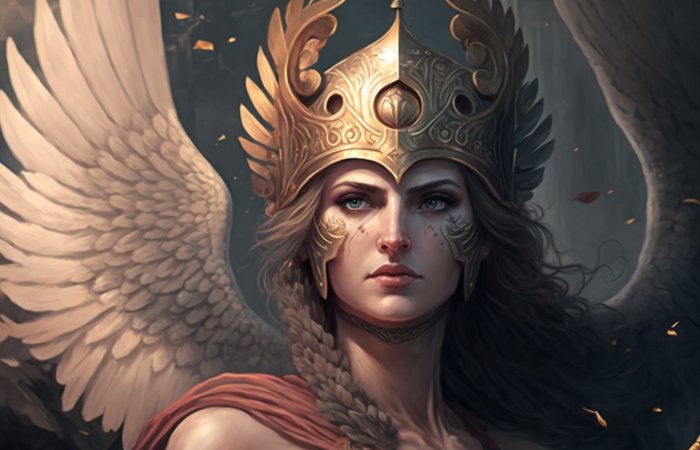Troublemaker Eris: Greek Deity That Ignited Hatred Among All
A. Sutherland- AncientPages.com - The Greek goddess Eris means everything wrong: envy, jealousy, hatred among human beings, chaos, confusion, tragedies, and conflict. Her attribute, the golden apple, was related to a great disaster.
Eris (her Roman counterpart was Discordia) had two faces and two characters: one was destructive, as she liked to destroy everything she met on her way, and the other was creative when she was stimulated to action; she could represent a spirit of healthy competition among people.
Credit: Adobe Stock - Aleksandr
Generally portrayed as a beautiful female spirit (or, in some versions, ugly), Eris had large wings and dark, straight hair. Otherwise, she was a negative figure and not a crowd favorite due to her problematic behavior. She caused chaos and stirred up trouble wherever she set foot.
Famous is an incident with Eris when Zeus hosted the feast of the gods at the wedding of Peleus and Thetis on Mount Olympus. All gods and goddesses were invited except for one - Eris.
No one wanted Eris to attend. Who would wish to be a troublemaker, especially at the wedding?
But Eris took it personally.
While they were feasting so cheerfully and in harmony, an undesirable guest suddenly appeared: Eris, the goddess of all possible problems one can get.
Knowing her troublesome nature, Zeus did not order to send an invitation to her, but she came after all to get revenge. She threw a golden apple on the banquet table with the inscription: "for the most beautiful."
It sparked a dispute over supremacy between Hera, Athena, and Aphrodite, who were excited. They wanted an apple for themselves. The wedding banquet had become chaotic, no longer the serene assembly of joyous attendees, and it had reached a point where even Zeus had to step in. He announced that the court of Paris would settle the dispute.
This is a pencil illustration of Eris, the Greek goddess of discord, drawn by Spencer Alexander McDaniel in June 2020. Her peplos is green, symbolizing envy, a common source of strife. In her right hand, she holds golden apple with the words "τῇ καλλίστῃ" on it. In her left hand, she holds a xiphos, a kind of ancient Greek sword. A passage from Hesiodos's Works and Days is written in Greek on her right. My own English translation of the passage is written on her left. Image credit: Katolophyromai - CC BY-SA 4.0
Zeus was a clever god; he did not want to participate in such an embarrassing decision.
Paris required each goddess to disrobe so that he could see every bit of their beauty. He saw it, but he still could not make up his mind. The divine women were gorgeous.
Then, the goddesses tried bribery. In return for his vote, each goddess proposed a gift to Paris. Hera offered him earthly power, and Athena offered him military power and the glory of victories.
Finally, Aphrodite could deliver to Paris the affections of the most beautiful mortal woman—Helen of Sparta, already married to King Menelaus (a fact she did not mention).
"In faraway Sparta," she said, "in the house of King Menelaus, the most wonderful woman in the world lives, Helen. I'll give it to you." Without hesitation, Paris gave the golden apple to Aphrodite.
It eventually led to the Trojan War, with Paris, Helen, and the rest of Troy on one side and all Greek city-states on the other. Disappointed and angry, Hera chooses against Paris, who loses much because he does not select Hera at the wedding feast.
Some accounts called her the sister of the god of war, Ares, which would mean that their parents were Zeus and Hera. Eris caused the war by wreaking destruction. Ares loved conflict for its thrill and wasn't swayed by sides; he assisted one side and sometimes the other in the battle. The two were supposed to be an inseparable duo. However, even Ares had had enough of her companion sometimes and liked Olympus's tranquility. Eris was not welcomed there, and it's clear why.
In the Works and Days, Hesiod proposes two separate Eris. One is a daughter of Nyx (Night) and gives birth to many offspring representing negative characters. The other Eris represents a spirit that gives people a healthy sense of competition, but she has never been remembered for that. Instead, she is predominantly recognized as the symbol of troubles culminating in Greek mythology's disastrous war.
In the religion of ancient Greece, the cult of Eris was not widespread, probably due to her negative role in mythology. However, her impact on other mythological characters and events makes her an essential figure in the Greek pantheon.
Her depictions were common in ancient artwork, on vases and frescoes, often accompanying depictions of disputes and battles.
Eris symbolizes various abstract ideas, primarily associated with harshness and death, along with other adverse emotions that most individuals typically prefer to avoid.
Written by - A. Sutherland - AncientPages.com Senior Staff Writer
Copyright © AncientPages.com All rights reserved. This material may not be published, broadcast, rewritten or redistributed in whole or part without the express written permission of AncientPages.com
More From Ancient Pages
-
 41,500-Year-Old Ivory Pendant Is The Oldest Evidence Of Humans Decorating Jewelery In Eurasia
Archaeology | Nov 26, 2021
41,500-Year-Old Ivory Pendant Is The Oldest Evidence Of Humans Decorating Jewelery In Eurasia
Archaeology | Nov 26, 2021 -
 Egyptian Gods’ Battle For Ancient Rome – Apis And Isis Cult Against Christianity
Ancient History Facts | Feb 9, 2018
Egyptian Gods’ Battle For Ancient Rome – Apis And Isis Cult Against Christianity
Ancient History Facts | Feb 9, 2018 -
 Atacama Desert And Its Ancient Lakes Can Rewrite South American History – Is An Ancient Lost Civilization Buried Beneath The Sand?
Civilizations | Oct 19, 2016
Atacama Desert And Its Ancient Lakes Can Rewrite South American History – Is An Ancient Lost Civilization Buried Beneath The Sand?
Civilizations | Oct 19, 2016 -
 12,000-Year-Old Archaeological Evidence Of Human-Dog Friendship In Alaska
Archaeology | Dec 5, 2024
12,000-Year-Old Archaeological Evidence Of Human-Dog Friendship In Alaska
Archaeology | Dec 5, 2024 -
 Large Underwater Site That Was Home To 500,000 People About 14,000 Years Ago Identified Northwest Of Australia
Earth Changes | Jan 17, 2024
Large Underwater Site That Was Home To 500,000 People About 14,000 Years Ago Identified Northwest Of Australia
Earth Changes | Jan 17, 2024 -
 Ancient Roman Shipwreck Marausa 2 With Intact Cargo Recovered Off The Coast Of Sicily
Archaeology | Oct 23, 2023
Ancient Roman Shipwreck Marausa 2 With Intact Cargo Recovered Off The Coast Of Sicily
Archaeology | Oct 23, 2023 -
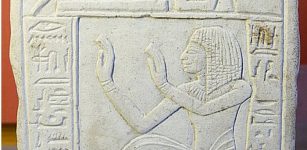 Meretseger: Theban Cobra Goddess Who Presided Over The Valley of The Kings
Egyptian Mythology | Jul 10, 2021
Meretseger: Theban Cobra Goddess Who Presided Over The Valley of The Kings
Egyptian Mythology | Jul 10, 2021 -
 Spectacular Chand Baori Stepwell Of India That Resembles Reversed Pyramid
Featured Stories | Jul 14, 2015
Spectacular Chand Baori Stepwell Of India That Resembles Reversed Pyramid
Featured Stories | Jul 14, 2015 -
 Sophisticated Masonry In Anasazi Dwelling Ruins At Mesa Verde National Park, Colorado, USA
Civilizations | Aug 11, 2015
Sophisticated Masonry In Anasazi Dwelling Ruins At Mesa Verde National Park, Colorado, USA
Civilizations | Aug 11, 2015 -
 On This Day In History: Zhao Kuangyin Became Emperor Taizu Of Powerful Song Dynasty – On Feb 4, 960
News | Feb 4, 2017
On This Day In History: Zhao Kuangyin Became Emperor Taizu Of Powerful Song Dynasty – On Feb 4, 960
News | Feb 4, 2017 -
 Loss Of Rainforests, Grasslands In Southeast Asia Caused Extinction Of Megafauna And Ancient Humans
Archaeology | Oct 10, 2020
Loss Of Rainforests, Grasslands In Southeast Asia Caused Extinction Of Megafauna And Ancient Humans
Archaeology | Oct 10, 2020 -
 4,500-Year-Old Ramp Might Explain How Huge Stones Were Transported To Great Pyramids’ Building Site
Archaeology | Nov 9, 2018
4,500-Year-Old Ramp Might Explain How Huge Stones Were Transported To Great Pyramids’ Building Site
Archaeology | Nov 9, 2018 -
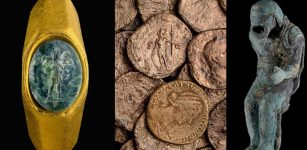 Magnificent Underwater Treasure Recovered From Two Ancient Shipwrecks Off The Coast Of Caesarea
Archaeology | Dec 28, 2021
Magnificent Underwater Treasure Recovered From Two Ancient Shipwrecks Off The Coast Of Caesarea
Archaeology | Dec 28, 2021 -
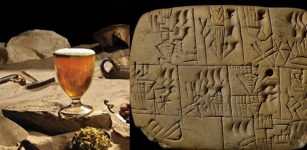 World’s Oldest Paycheck Reveals Ancient Sumerian Workers Were Paid In Beer
Ancient History Facts | Nov 22, 2018
World’s Oldest Paycheck Reveals Ancient Sumerian Workers Were Paid In Beer
Ancient History Facts | Nov 22, 2018 -
 Mysterious Ancient Andean Waskiri Structure Built For Unknown Purpose Investigated By Scientists
Archaeology | Apr 14, 2023
Mysterious Ancient Andean Waskiri Structure Built For Unknown Purpose Investigated By Scientists
Archaeology | Apr 14, 2023 -
 Ancient DNA Reveals: Iberian Males Were Almost Completely Replaced Between 4,500 And 4,000 Years Ago
Archaeology | Mar 15, 2019
Ancient DNA Reveals: Iberian Males Were Almost Completely Replaced Between 4,500 And 4,000 Years Ago
Archaeology | Mar 15, 2019 -
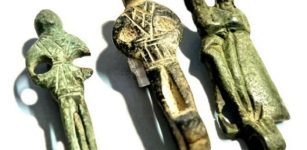 Exceptionally Rare Medieval Loop For Hanging Keys Found Near Kamień Pomorski, Poland
Archaeology | Mar 19, 2024
Exceptionally Rare Medieval Loop For Hanging Keys Found Near Kamień Pomorski, Poland
Archaeology | Mar 19, 2024 -
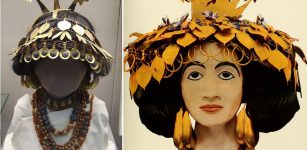 Mysterious Sumerian Queen Puabi And Her Magnificent Underground Burial Complex – Many Followed Her To Afterlife
Featured Stories | Oct 20, 2016
Mysterious Sumerian Queen Puabi And Her Magnificent Underground Burial Complex – Many Followed Her To Afterlife
Featured Stories | Oct 20, 2016 -
 Advanced Heating System Discovered In Ruins Of Metropolis ‘City Of Mother Goddess’
Archaeology | Nov 17, 2019
Advanced Heating System Discovered In Ruins Of Metropolis ‘City Of Mother Goddess’
Archaeology | Nov 17, 2019 -
 Cats Were Rare And Expensive During The Viking Age – Spectacular Discovery Reveals Why
Featured Stories | Jan 12, 2017
Cats Were Rare And Expensive During The Viking Age – Spectacular Discovery Reveals Why
Featured Stories | Jan 12, 2017

